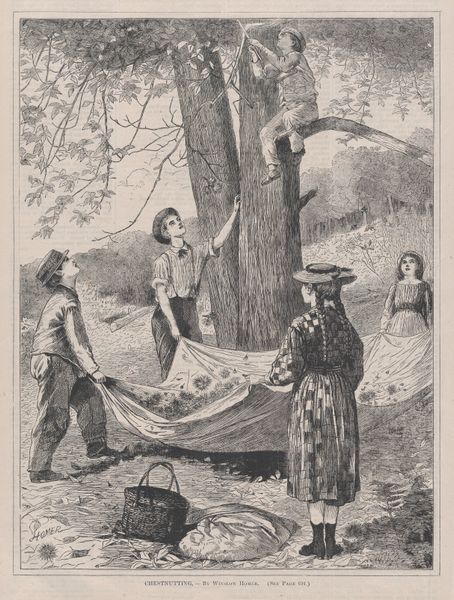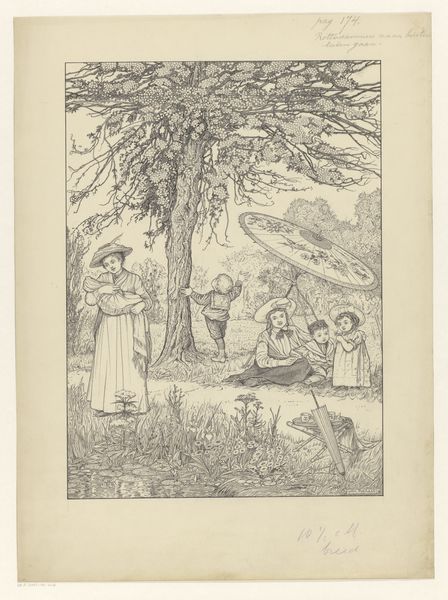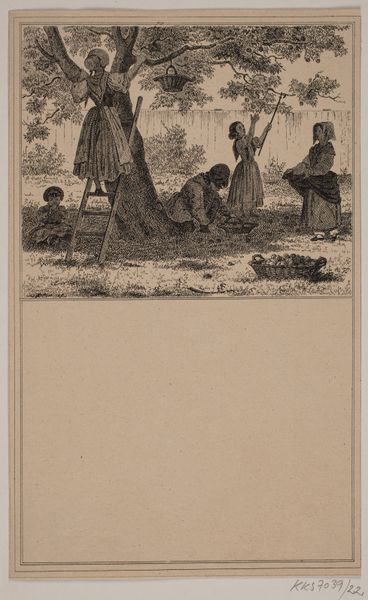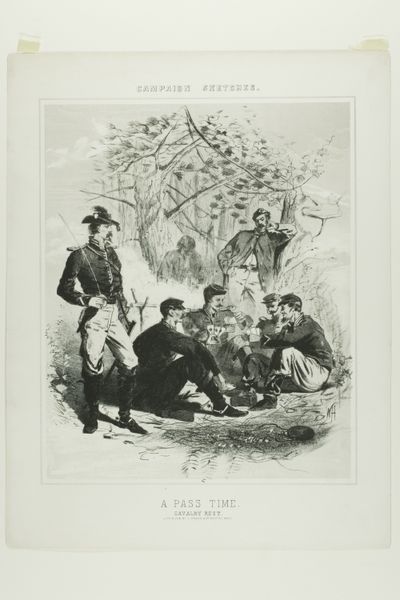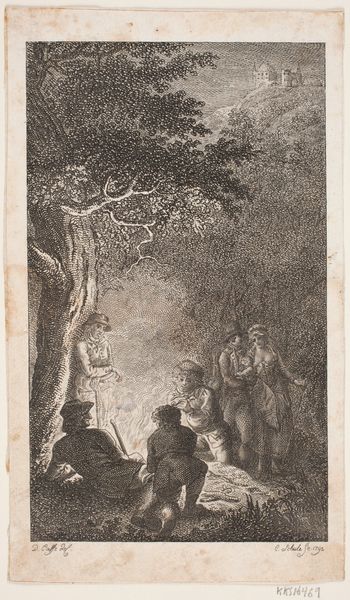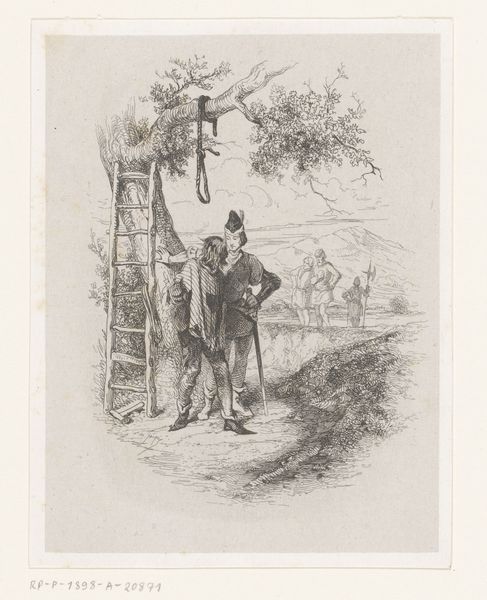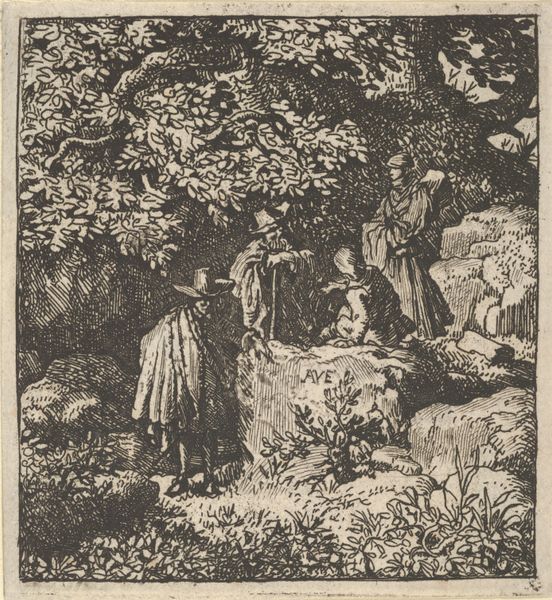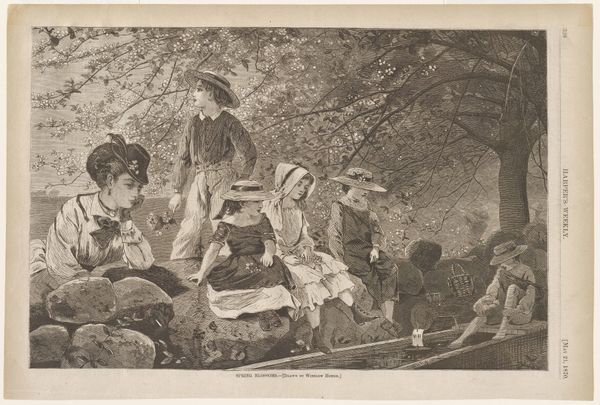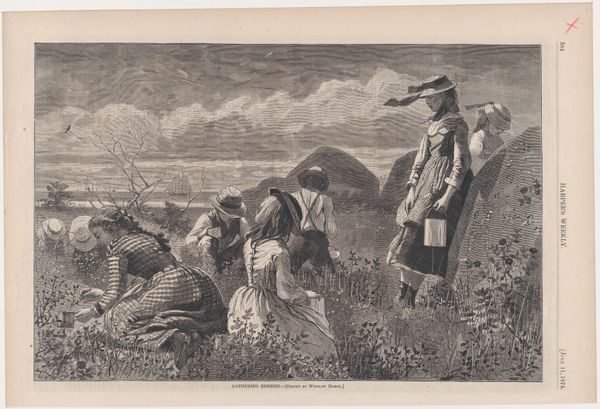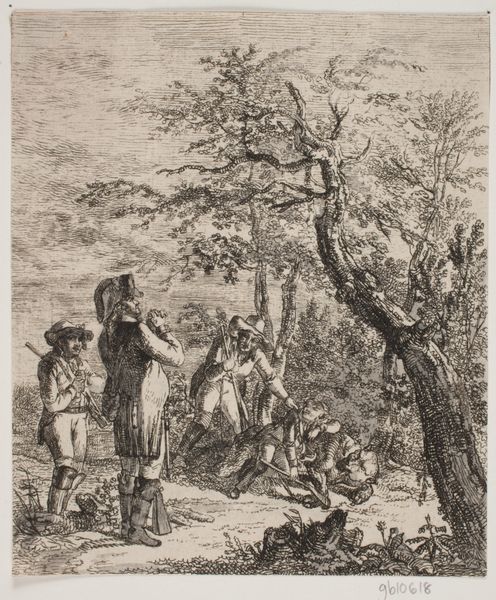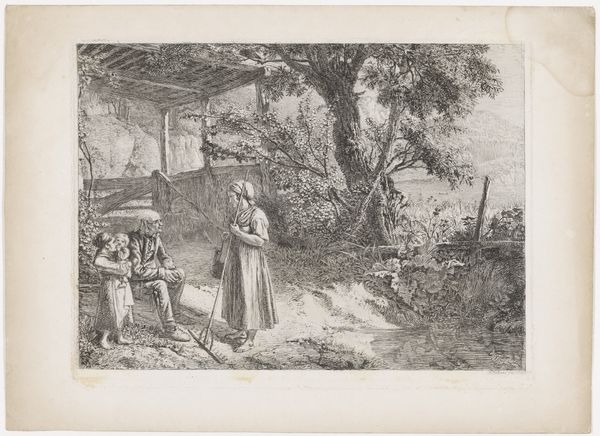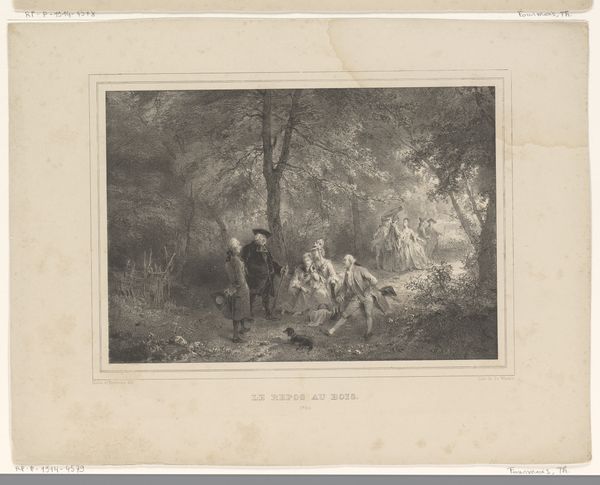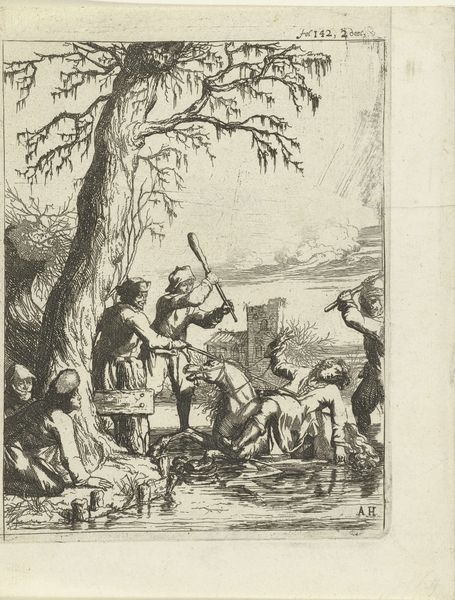
print, woodblock-print, woodcut, wood-engraving
#
narrative-art
# print
#
impressionism
#
landscape
#
woodblock-print
#
woodcut
#
genre-painting
#
wood-engraving
Dimensions: 11 13/16 x 8 7/8 in. (30 x 22.54 cm) (image)14 1/8 x 10 7/16 in. (35.88 x 26.51 cm) (sheet)
Copyright: Public Domain
Editor: Here we have Winslow Homer's "Chestnutting" from 1870, a wood engraving. The scene depicts children gathering chestnuts, and it feels like such a classic autumnal image. What do you see in this print? Curator: I'm immediately drawn to the process of its creation. This wasn't painting; it's mass-produced art intended for "Every Saturday: An Illustrated Journal of Choice Reading." Consider the labor involved in translating Homer’s vision into a series of cuts in wood, the mechanics of transferring ink to paper, and distributing it widely. It speaks volumes about the democratizing potential of art, albeit within a capitalist framework. What were the conditions for the children at this time? Editor: That's a great point. Thinking about it as a manufactured object changes how I see it. Were these widely available, and did it change the consumption of art? Curator: Absolutely! This kind of image became available to a broad audience beyond the traditional art-viewing public. Consider how it fueled both popular taste and visual culture. This engraving also offers commentary on child labor: while they are children picking chestnuts for sport here, child labor was a stark reality for many children during this era, blurring boundaries between leisure and toil. Editor: That reframes the image entirely. I was focused on the charming scene, but it’s really highlighting the conditions of labor and access. Curator: Exactly! It shows how everyday activities can mask larger systems of power and the accessibility and process behind producing art for everyone to consume, so they too could experience its inherent materiality, regardless of its context. Editor: Thanks; it really has brought new understanding to the class implications of visual culture in print media.
Comments
No comments
Be the first to comment and join the conversation on the ultimate creative platform.
